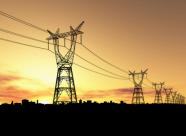 Building a smarter grid sometimes simply means optimizing existing assets, as our readers well know. Building a smarter grid sometimes simply means optimizing existing assets, as our readers well know.
In the transmission system, that can mean boosting capacity from conservative, theoretical limits to something closer to actual capacity.
In the case of integrating isolated wind farms into the grid - an increasingly frequent challenge for T&D operators - well-publicized issues often revolve around siting and cost-allocation for new rights-of-way (ROW) and transmission lines.
Whether installing new lines or optimizing existing ones, optimization can help boost capacity and aid in the nuances of power flow. (One desired byproduct: increasing N-1 reliability support, maintaining transmission capacity when one line goes down by optimizing the remaining lines.) Some technologies can minimize the footprint of a new line, aiding planning and permitting.
A handful of technologies, ranging from well-understood to nascent, aid optimization, according to a new IDC report. Dynamic line rating, high-temperature low-sag conductors, voltage uprating, AC to DC conversion, Flexible AC Transmission System (FACTS) devices, high-voltage DC systems and superconducting conductors all serve in different ways.
Many of you are familiar with these technologies and I'd like to explore more operational issues, so please let me know if you have a related project. (We covered FACTS last month.)
"The common theme to these technologies is that they allow you to maximize the power you can transmit without building a new line," Jay Holman, lead IDC analyst for renewables, told me. "Also, they minimize the pain that goes with increasing capacity to accommodate more wind on your grid, even if these technologies were developed for another purpose."
"The outlook is bright for the majority of these technologies, even those associated with new transmission lines and ROW," Holman added. "If you install a new wind farm, it's likely you'll need to build new transmission lines. Once you connect that wind resource to the grid, the impact is broader than just that one connection. New capacity creates stresses to the existing grid and these technologies can relieve those stresses."
Dynamic line rating (DLR) equipment, for instance, has a variety of approaches. One method is to measure ambient temperature, another a wider range of weather conditions. Another method monitors a line's tension, yet another measures actual sag. DLR can also be accomplished by measuring a line replica or by using phasor measurement units at each end of an actual line.
The term "high-temperature, low-sag conductors" covers a variety of materials that may be more expensive, but might serve situations such as long spans over rivers where the extra expense is worthwhile. Line loss remains a problem, so this option is ideal where high power levels are infrequent, according to Holman.
Voltage uprating involves taking a line to the next standard voltage level, increasing power flow without increasing current. This method of increasing capacity, however, often requires a larger conductor and larger transformer, Holman said.
AC to DC line conversion "has never been carried out," Holman said, and it looks to be a costly process requiring an expanded footprint, making it an unlikely choice for urban environments.
Flexible AC Transmission System (FACTS) devices take a variety of forms, including static VAR compensators (SVCs) and STATCOM devices, which provide dynamic reactive power to support voltage levels and can counteract rapid changes - such as those caused by line faults. FACTS contribute mainly to system stability, which indirectly aids optimized capacity.
Holman also covered new technologies for new transmission lines, including high-voltage direct current lines and superconducting lines. The former are likely to play a larger role in the future, while the latter are approaching commercialization.
Applications of these technologies depend on geographic and climate conditions, the transmission layout, where a line fits into the grid, etc., the analyst said. Dynamic line rating, for example, can help you approach the thermal limit of a line, which is a measure of the ultimate power it can carry.
"But you have to be careful about how close to that limit you get," Holman pointed out. "If you try to do that on every line between point A and point B, then you no longer have that buffering capacity if one line fails. It gets very complicated very quickly.
"When you talk to transmission developers about which technologies might be useful in certain situations, you often hear the phrase, 'it depends,'" Holman added. "It's complicated and elements of the grid are interrelated.
"Selecting and implementing these technologies requires modeling," Holman continued. "In certain circumstances one of these technologies will work. But one size doesn't fit all. In different circumstances, adding new transmission may be cost-effective or the only option.
"I don't want to over-simplify," the analyst concluded. "Modeling is a first, key step. That's where the process always has to start, due to the complexities."
Phil Carson
Editor-in-chief
Intelligent Utility Daily
pcarson@energycentral.com
303-228-4757 | 


 Building a smarter grid sometimes simply means optimizing existing assets, as our readers well know.
Building a smarter grid sometimes simply means optimizing existing assets, as our readers well know.